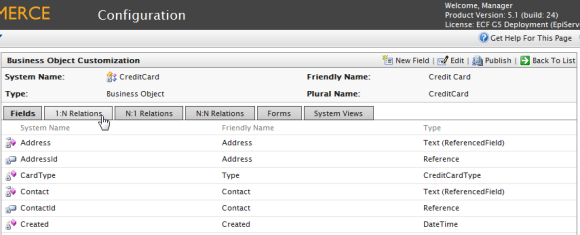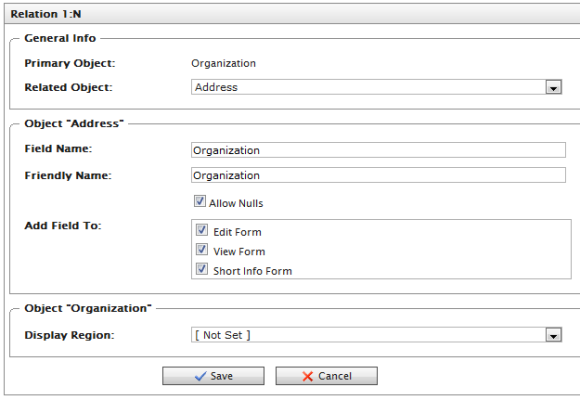
Business Foundation objects allows you to specify 1 to Many Relationships. For example, if you have one organization, you can relate many types of data to that organization, such as multiple contacts, addresses, or organizational units or divisions within an organization. Within a 1:N relationship, the business object you selected will be "1."
In the example below, 1 = Organization and N = related objects such as Address, Contact, CreditCard, etc.
To add a 1 to many relationship to a business object, you will need to create a new business object or use an existing one. On the Business Object Customization page, click on 1:N Relations.

Click on New Relation "one to many" to create a new relation.

Under General Info, the Primary Object Organization is automatically set to Organization.

The Related Object will have the Primary Object appear under the opposite relationship (N:1) on its configuration form. For instance, if organization is the Primary Object and the Related Object is Address, the relationship is automatically generated under the N:1 tab in Address.

Version: EPiServer Commerce 1 R2 SP2| Last updated: 2012-09-20 | Copyright © EPiServer AB | Send feedback to us